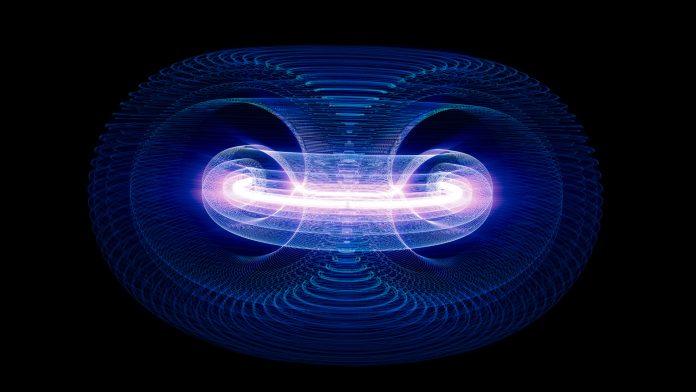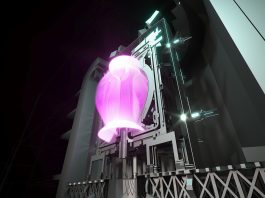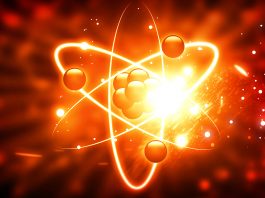Dr Scott Hsu, Lead Fusion Coordinator at the U.S. Department of Energy, outlines recent efforts in the US’ journey to commercialising fusion energy.
As the world focuses on finding cleaner energy sources, efforts to accelerate the mass adoption of fusion energy are ramping up. Replicative of the reaction that powers our Sun, fusion power generates electricity using heat from nuclear fusion reactions. Whilst many research organisations around the world are working to advance fusion science and generate a practical fusion energy source, the commercialisation of fusion energy is not yet a reality and many challenges must be overcome.
The potential benefits of fusion energy are immense in the global energy transition, as it holds the promise of being an on-demand, safe and abundant source of carbon-free energy and electricity. These benefits, combined with the complex challenges associated with generating fusion energy, have prompted a large international effort to accelerate fusion research and development (R&D).
The US is a major player in this work and efforts were significantly accelerated following the implementation of the United States Energy Act of 2020, which set out multiple provisions to drive forward the movement towards a clean energy future. In March 2022, the White House Office of Science and Technology Policy and the U.S. Department of Energy (DOE) co-hosted a White House Summit entitled ‘Developing a Bold Decadal Vision for Commercial Fusion Energy’. The aim of the Bold Decadal Vision is to establish a strong partnership between the DOE and the fusion private sector to further fusion science and develop a world-leading, US-led commercial fusion industry. The Vision will also address the various regulatory and security issues associated with commercialising fusion.
The first step towards realising the Vision came in September 2022, when the DOE announced up to $50m in funding to launch a new milestone-based fusion development program, as authorised in the Energy Act. The program will support for-profit entities, who may team with national laboratories, universities, and others, to meet major technical and commercialisation milestones toward the successful design of a fusion pilot plant (FPP) that will help bring fusion toward technical and commercial viability.
Dr Scott Hsu is the Lead Fusion Coordinator for the Office of the Under Secretary for Science and Innovation at the DOE, responsible for co-ordinating fusion energy activities across multiple DOE program offices. The Innovation Platform Editor, Georgie Purcell, spoke to Dr Hsu to learn more about the fusion activities of the DOE and how these fit with the US’ overall strategy to transform the energy sector with fusion.
What are the major challenges faced by the US in the plight to commercialise fusion energy? How can these be overcome?
There are both technical and non-technical challenges.
Technical challenges are well known and include:
- Achieving and sustaining adequate energy gain in a fusion plasma;
- Materials and concepts to handle the extreme heat and particle flux of a fusion plasma; and
- Closing the fuel cycle including tritium breeding and processing.
Non-technical challenges include:
- Mobilising adequate public and private funding;
- Establishing regulatory, export-control, and non proliferation frameworks that engender public trust and enable timely licensing;
- Building a diverse workforce;
- Ensuring robust supply chains and manufacturing capabilities;
- Public engagement/acceptance; and
- Energy justice.
At DOE, we are pursuing a Department-wide approach to address all these needs in partnership with the private sector, non-profits, other government agencies, and international partners.
The DOE has recently announced up to $50m to launch a new milestone-based fusion development program. Can you elaborate on this program and explain how it will help to bring fusion towards technical and commercial viability?
The milestone-based fusion development program will enable the DOE to partner with privately-funded fusion companies to realise preliminary designs for a fusion pilot plant (FPP). Importantly, this partnership harnesses the $5bn of private capital invested into predominantly US fusion companies. The recent National Academies report, ‘Bringing Fusion to the U.S. Grid’, defines a FPP as producing significant net electricity >50 MWe for greater than three continuous hours, with a timely path to one full-power year. The capital cost must be low enough to attract commercialisation partners and investors.
There are two program Tiers: the upper Tier for delivering a FPP preliminary design by the late 2020s, and the lower Tier by the early 2030s. Actual construction and initial operation of FPP are beyond the scope of the program. We would look to continued public-private partnerships to support demonstration activities, such as through the new DOE Office of Clean Energy Demonstrations and/or the Loan Programs Office.
What action is needed to ensure that the US becomes a key exporter of fusion technologies?
Urgent new public and private investments, establishing an energy-development focus for fusion, and new programs that align public- and private-sector fusion research, development and demonstration (RD&D) to enable a FPP in the 2030s. We must also systematically address all the non-technical issues listed above.
Earlier this year, the Bold Decadal Vision for Fusion Energy was launched. Why is this so significant?
It was significant for fusion to receive recognition by US Government leadership that it is time to move beyond a science-oriented fusion program and to harness the significant market pull for fusion. It was significant for US Government leadership to declare that we wish to bring fusion energy to technical and commercial viability on an aggressive decadal timescale. Finally, it was significant to recognise that fusion has a golden opportunity to build in energy justice from the start to restore past harms to communities and to facilitate public acceptance.
How important is international collaboration in your work?
International collaboration and co-ordination are important. Fusion energy has long been a worldwide scientific endeavour, and new scientific developments must continue to be shared, e.g., fusion scientific research on international facilities including ITER. As we turn our attention to enabling a FPP on an aggressive timescale, we are also exploring more targeted opportunities with our international partners, including shared test facilities; co-ordination on regulatory and non-proliferation frameworks; and developing robust supply chains including fuel supplies.
Dr Scott C Hsu
Lead Fusion Coordinator
U.S. Department of Energy
https://www.energy.gov/
Please note, this article will also appear in the twelfth edition of our quarterly publication.









